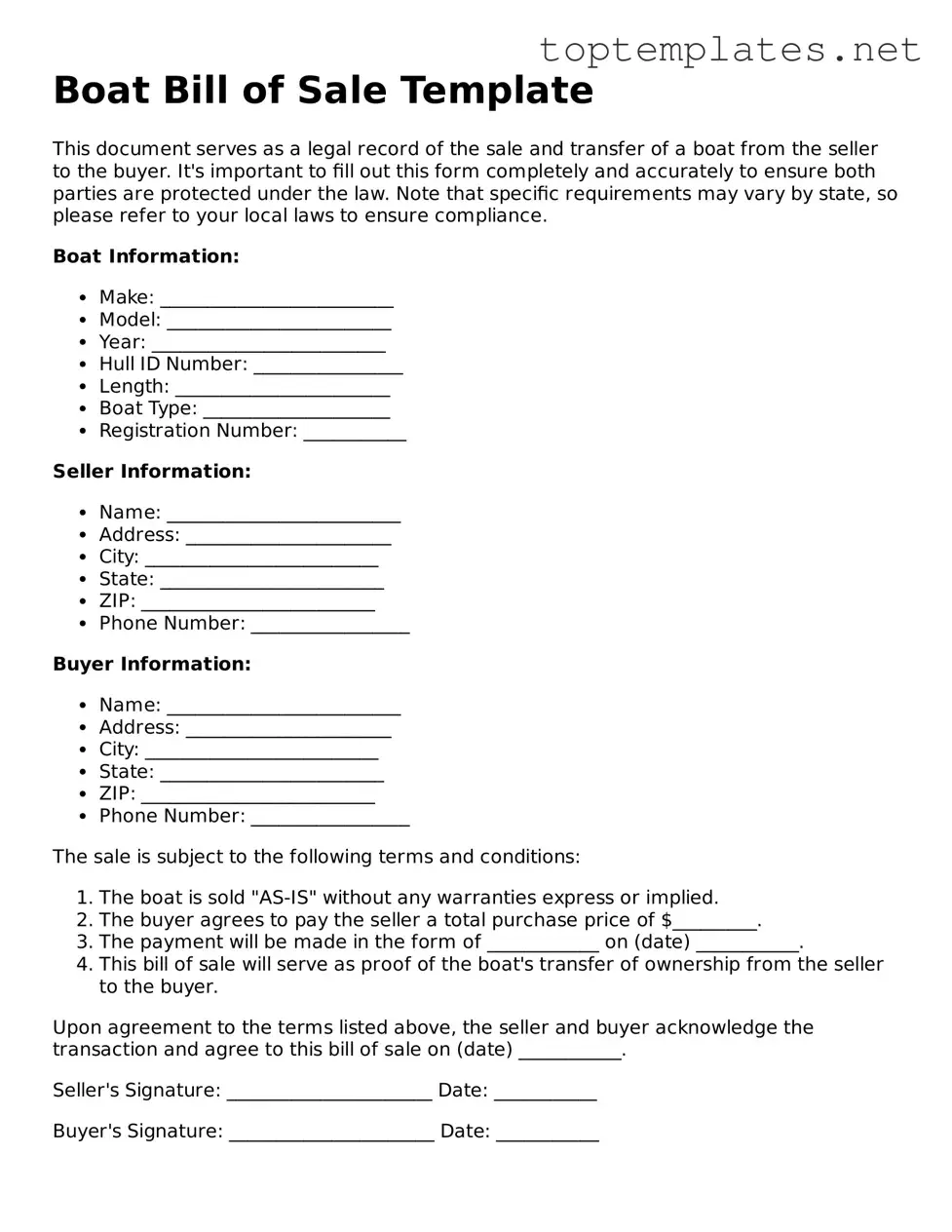What is a Boat Bill of Sale, and why do I need one?
A Boat Bill of Sale is a document that records the sale and transfer of a boat's ownership from the seller to the buyer. It acts as a legal contract that confirms the transaction and provides proof of purchase, which is essential for the buyer to register the boat in their name. Additionally, it protects both parties by detailing the condition of the boat, the sale price, and any warranties or agreements made at the time of sale.
What should be included in a Boat Bill of Sale?
The document should include the names and addresses of both the seller and the buyer, a detailed description of the boat (including make, model, year, and hull identification number), the sale price, any warranties or guarantees, the sale date, and signatures from both parties. It is also recommended to have witness signatures or a notary public seal to further authenticate the document.
Is a Boat Bill of Sale required for all boat transactions?
While requirements can vary from state to state, most require a Boat Bill of Sale for the registration and titling process of the boat with state authorities. Even in states where it is not mandatory, having a Bill of Sale is recommended as it serves as a legal record of the transaction and ownership transfer.
Can a Boat Bill of Sale be used for any type of boat?
Yes, a Boat Bill of Sale can be used for a variety of watercraft, including fishing boats, sailboats, yachts, and personal watercraft like jet skis. However, the specific information required may vary depending on the type of boat, so it's important to include as much detail as possible about the vessel being sold.
How does a Boat Bill of Sale protect the buyer and the seller?
For the seller, the Boat Bill of Sale establishes that they have legally transferred ownership and are free from any future liabilities or disputes regarding the boat. For the buyer, it serves as proof of purchase and ownership, which is necessary for registration and can protect against potential claims or disputes about the boat's condition or ownership. In essence, it provides a clear record of the transaction details, which can be invaluable in resolving any future disagreements.
